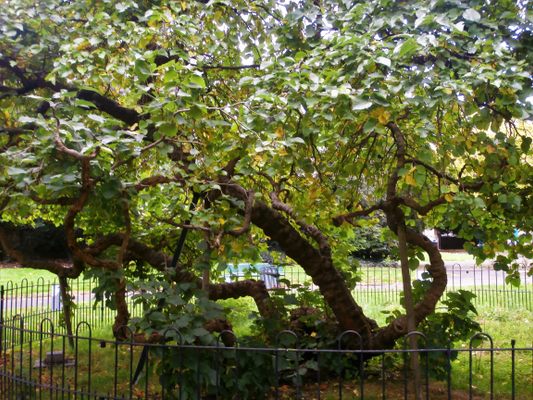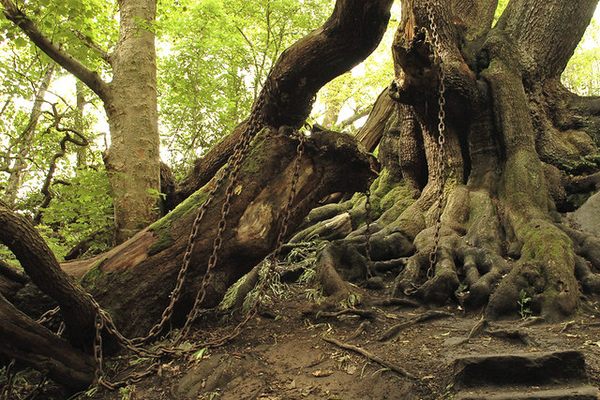About
Laid out by the writer and gardener John Evelyn, Sayes Court Garden in Deptford was among the most renowned botanical collections of 17th-century England. Now mostly vanished under more modern construction, the largest remaining green space in the area is Sayes Court Park, an unremarkable example of 1950s landscaping apart from one feature that has supposedly survived since Evelyn’s time.
In the middle of the park, fenced off and with wooden supports holding up its aging limbs, sits a mulberry bush that is reckoned to be over 300 years old. How it got there is not entirely clear and there are many varying accounts. In 2018, a stone was placed at the base of the tree to present the most popular—and probably most apocryphal—of all the stories.
In the 17th century, Deptford was a hub of shipbuilding, which attracted Tsar Peter I, or "Peter the Great" of Russia to the area to research the latest techniques. In 1698 Evelyn leased his Sayes Court Garden to the tsar, who then seemed to forget the main reason for his visit and instead spent his time researching the local pubs. His drunken behavior caused significant damage to the estate—legend has it he trashed the garden by pushing his friends around it in a wheelbarrow, and the mulberry was planted to make up for his exploits.
More likely is that the bush was planted by Evelyn himself, or even predates his possession of the land. Almost a century earlier, King James I had sent out black mulberries to London landowners hoping they would attract silkworms and start a British silk industry. (He failed to realize that silkworms prefer white mulberries.)
Whatever its origin, the mulberry tree is very popular with locals, who quickly gather the fruits when they appear during the summer months.
Related Tags
Know Before You Go
The mulberry tree can be found in Sayes Court Park in the Deptford district of East London. The public park is open from 8 a.m. to sunset.
Community Contributors
Added By
Published
February 22, 2019

























